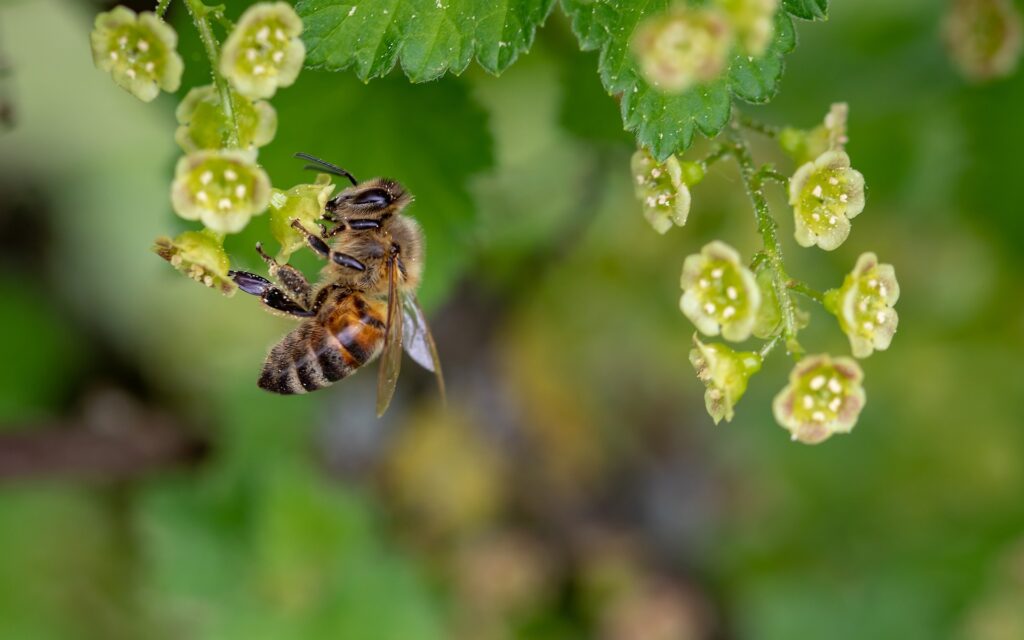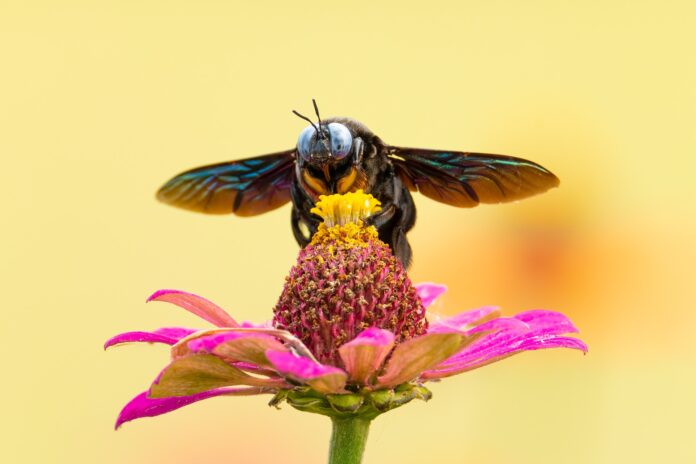Bees are one of the most fascinating creatures on earth. They are known for their incredible work ethic and their crucial role in pollinating plants. In this ultimate guide, we will explore everything you need to know about bees, from their anatomy and behavior to their importance in our ecosystem and the threats they face.
What are Bees?
Bees are flying insects that belong to the order Hymenoptera, which also includes ants and wasps. They are characterized by their hairy bodies, compound eyes, and long antennae. There are over 20,000 species of bees, but the most well-known are honeybees, bumblebees, and solitary bees.
Anatomy of Bees
The anatomy of bees is truly remarkable. They have three main body parts: the head, thorax, and abdomen. Their eyes are compound, which means they are made up of many individual lenses that allow them to see a wider range of colors and shapes than humans. Bees also have two pairs of wings, which they use to fly and regulate their body temperature.
One of the most distinctive features of bees is their proboscis, a long, tube-like tongue that they use to collect nectar from flowers. Bees also have hairy legs and bodies, which helps them to collect pollen and transport it back to their nests.
Behavior of Bees
Bees are social creatures and live in colonies, with a queen bee and her female worker bees. The queen bee is responsible for laying eggs, while the worker bees take care of the hive and collect food. Male bees, or drones, are only present during mating season.
Bees communicate with each other through a series of dance moves and pheromones. They use their dances to indicate the location of food sources and to communicate with each other about potential threats.
Importance of Bees in our Ecosystem

Bees play a critical role in our ecosystem by pollinating plants. They are responsible for pollinating approximately one-third of the food we eat, including fruits, vegetables, and nuts. Without bees, our food supply would be severely impacted, and the cost of food would increase significantly.
Food Production
Bees are responsible for pollinating many of the crops that make up our food supply, including fruits, vegetables, nuts, and seeds. Without bees, we would have a much more limited selection of food available to us.
Biodiversity
Bees also contribute to biodiversity by pollinating a wide variety of plants. This helps to ensure that different species of plants can survive and thrive, which is important for maintaining a healthy ecosystem.
Soil Fertility
Some bees, such as bumblebees, are “buzz pollinators,” which means they vibrate their wings to release pollen from flowers. This vibration also helps to shake loose soil particles, which can help to increase soil fertility.
Medicinal Properties
Bees are not just important for food production, they also have medicinal properties. Honey, for example, has been used for centuries to treat wounds and infections, and has been shown to have antibacterial and anti-inflammatory properties.
Ecosystem Services
Bees provide a number of other ecosystem services as well, including helping to control pests and promoting the growth of other plants. These services are essential for maintaining a healthy and thriving ecosystem.
Relationship With Human
Bees have had a long and complex relationship with humans throughout history. They have been revered for their honey, wax, and medicinal properties, and have even played a role in religious and cultural ceremonies.
Bees and Honey
One of the most well-known uses of bees is for honey production. Honey has been used by humans for thousands of years as a sweetener, preservative, and medicine. In ancient times, honey was highly prized and was even used as a form of currency.
Today, honey is still a popular food and is used in a wide range of products, from baked goods to beauty products. Honey is also used in some medical treatments and has been found to have antibacterial and antioxidant properties.
Beeswax
Beeswax is another product that humans have long used. Beeswax is a natural wax produced by bees, and is used in many products, including candles, cosmetics, and furniture polish. Beeswax is also used in some medical treatments, as it has anti-inflammatory and wound-healing properties.
Medicinal Properties
In addition to honey and beeswax, bees have also been used for their medicinal properties. In some cultures, bee venom has been used to treat conditions such as arthritis and multiple sclerosis. Propolis, a substance produced by bees, has also been found to have antibacterial and antiviral properties
Importance in Agriculture
As mentioned earlier, bees play a crucial role in pollinating plants, making them essential to agriculture. Bees are responsible for pollinating crops such as apples, almonds, and blueberries, and without them, these crops would not be able to produce fruit.
Challenges and Solutions
Despite the many benefits of bees, they are facing several challenges. Habitat loss, pesticide exposure, and climate change are all contributing to a decline in bee populations around the world. However, there are also many solutions being developed to help protect bees and ensure their survival.
One solution is to create more habitats for bees by planting pollinator-friendly plants and providing nesting sites. Another solution is to reduce pesticide use and promote sustainable agriculture practices that support pollinators.
Characteristics
Social Behavior
Bees are social insects and live in colonies. Each colony typically contains one queen bee, hundreds of male drones, and thousands of female worker bees. The queen bee is responsible for laying eggs, while the worker bees do the work of gathering nectar, making honey, and caring for the young.
Communication
Bees have an intricate system of communication that involves using pheromones and dances to convey information to other members of the colony. For example, worker bees will perform a “waggle dance” to communicate the location of a food source.
Honeycomb
Bees build honeycomb, which is made up of hexagonal cells that are used for storing honey, pollen, and larvae. The hexagonal shape is efficient in terms of space and materials, allowing bees to store a large amount of honey in a relatively small area.
Flight
Bees are excellent fliers, capable of hovering, flying forwards and backwards, and even flying upside down. They are also able to fly at speeds of up to 15 miles per hour.
Sting
While bees are generally not aggressive, they do have a sting that they will use to defend themselves or their colony. The sting is a modified ovipositor (egg-laying organ) and is only present in female bees.
Lifespan
The lifespan of a bee depends on its role within the colony. Queen bees can live for several years, while worker bees typically live for only a few weeks. Male drones have the shortest lifespan, living only a few days.
Adaptability
Bees are able to adapt to a wide range of environments, from forests to deserts to urban areas. This adaptability has helped them to survive and thrive in a changing world.
Conclusion
bees are an amazing and essential part of our ecosystem. Their pollination services are responsible for producing many of the foods we eat, and they play a vital role in maintaining biodiversity and ecosystem health. Bees also have other important uses, such as producing honey and other products with medicinal properties. However, bees are facing a number of threats, including habitat loss, climate change, and pesticide use. It is important that we take action to protect bees and their habitats, so that we can continue to benefit from their amazing contributions to our world. By planting bee-friendly flowers, supporting local beekeepers, and reducing our use of pesticides, we can all do our part to help protect these important insects.
FAQ
How do bees make honey?
Bees collect nectar from flowers using their proboscis and store it in their honey stomach. They then regurgitate the nectar into the honeycomb, where it is mixed with enzymes and water and left to dry. Once the honey is dry, the bees cap it with wax, which preserves it for later use.
Do all bees make honey?
No, not all bees make honey. Honeybees are the most well-known honey producers, but other species of bees, such as bumblebees, produce small amounts of honey for their own use.
How can we help bees?
There are several things we can do to help bees, including planting pollinator-friendly plants, reducing pesticide use, and supporting local beekeepers. We can also raise awareness about the importance of bees and their role in our ecosystem.
How do bees navigate to and from their hive?
Bees use a number of strategies to navigate, including using the sun and landmarks to orient themselves. They also have an amazing ability to detect and remember different scents, which helps them find their way back to the hive.
Can bees see colors?
Yes, bees are able to see a range of colors, including ultraviolet light. This ability helps them to locate flowers and other sources of nectar.
Are all bees able to sting?
No, not all bees are able to sting. Only female bees have a sting, and some species of bees do not have stingers at all.
How much honey can a single bee produce?
A single bee is capable of producing only a tiny amount of honey, around 1/12 of a teaspoon. However, because bees work together in colonies, they are able to produce large amounts of honey.
What is colony collapse disorder?
Colony collapse disorder is a phenomenon where entire colonies of bees disappear or die off, leaving behind only the queen and a few worker bees. The exact cause of colony collapse disorder is still unknown, but factors such as pesticides, habitat loss, and climate change may be contributing to the problem.
